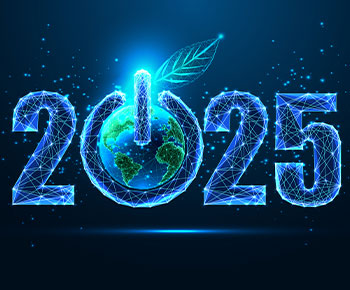Before reaching for ingredients, savvy product developers should be researching consumer behaviors. That’s because “macro movements” are impacting the how, when, where and why of consumer food choices.
Here are four predictions for 2025 from Mattson, a national insights, strategy, creative, culinary, and technical product development firm.
Daytime & Daypart Disruption: The Pandemic created a new normal for weekday lunch, thanks to the proliferation of working from home. Work from home wreaked havoc on restaurant lunch traffic and dollars. Lunch used to be a critically profitable daypart for QSR and other restaurant operators, including non-commercial contractors.
Given work from home fluidity, consumers are seeking flexibility in what they eat while working, and when. Many are snacking throughout the day, buoyed by the past five years in which we’ve protein-fortified everything from coffee to cookies.
The biggest growth in food-away-from-home comes from new occasions that have sprouted up at both ends of the day to replace the old “three meals a day,” and recover lost revenue from lunch. These new dayparts are morning snacking and evening treats. Not coincidentally, these occasions typically occur outside today’s non-stop Zoom-call workday.
How big is this disruption? Circana says that it explains almost half of the foodservice traffic that’s been lost since 2019. To us, that represents an opportunity for both operators and CPGs to offer nutritious, satisfying midday foods that nourish and excite consumers.
Before reaching for ingredients, savvy product developers should be researching consumer behaviors. That’s because “macro movements” are impacting the how, when, where and why of consumer food choices.
Remixed Sensory Experiences: Mattson’s second 2025 trend is all about rethinking and remixing sensory experiences. Today’s consumers are looking for experiences that not only taste great, but move them emotionally. Younger Generation Z and Alpha consumers may even prioritize experience and emotion over taste. Yes, this may be the first time we’ve seen this new ranking of attributes in the history of the American food business. Buckle up.
One phenomenon we’re watching involves those third-generation chefs who craft new-to-the-world food and beverage experiences. This is about chefs who grew up American with immigrant grandparents. They’re nostalgic for their roots but their take on food isn’t their grandmother’s version. It’s the new fusion that is the embodiment of the American melting pot.
That’s not the only place we’re seeing nostalgia pop up. There’s “era envy” for the ‘80s and ‘90s, when life was simpler and digital-free. QSRs are bringing back favorites, like Taco Bell’s Decades menu. And the “high-low” trend was in view at the US Open, where ticket holders could buy $100 boxes of chicken nugget boxes (from New York City’s Coqodaq restaurant) and dip them into creme fraiche and caviar. Now that’s a remix that would get consumers back into a McDonald’s!
Fluidity: Mattson’s third 2025 trend is what we’re calling “fluidity.” This reflects the consumer who demands versatility and freedom to adapt, change, and express themselves across all aspects of modern life—whether it’s food, fitness, fashion, family, or work.
We finally decided to stop updating our flexitarian longitudinal study when we realized just how outdated the categories were. What we see in consumers these days—especially younger consumers—is an openness about everything. You be you, and I’ll be me. This means eating vegetarian most of the time, but indulging in a steak when you’re being treated by your parents.
Workplace flexibility is what drove our “Daytime Disruption” trend, but that’s also happening inside the household, where there’s a sort of agile eating happening at different times of the day, with different family members. It’s been a long time since everyone sat down to eat the same food together at the same table, with the family dog underfoot.
And speaking of the family dog, we’re now working on pet food, where the biggest trend in that segment is crafting pet food that’s “human grade,” “fresh,” or “raw” instead of the standard kibble. If you wouldn’t eat it, why would you feed it to your pets?
Food Fuels Future Health: The old saying goes that food is medicine. Really?! Who wants to eat a plate full of pills? No one does. That’s why here at Mattson, we like the idea of food as fueling health. With so many social and scientific outlets for health hacking, learning, and experimenting, consumers feel empowered to proactively shape their health and longevity with both food and functional ingredients that enhance vitality, adaptability, and overall quality of life.
Another industry adage is they don’t teach nutrition in med school. Because of this, for years, it was hard to get much dietary help from doctors. What filled that void is D-I-Y. And it’s about time. People are turning to expert podcasters such as Andrew Huberman, Peter Attia, and the excellent Zoey.
These days we’re bullish on fiber, hydration, and dietary supplements as the new insurance policy. We’re also watching more doctors popping up who are focused on women’s health and the unique needs of women. Some focus on menopause, others on healthy aging, and others on fertility. We’re excited to dig deeper into this topic, as women’s health gains even more attention in the national consciousness.






